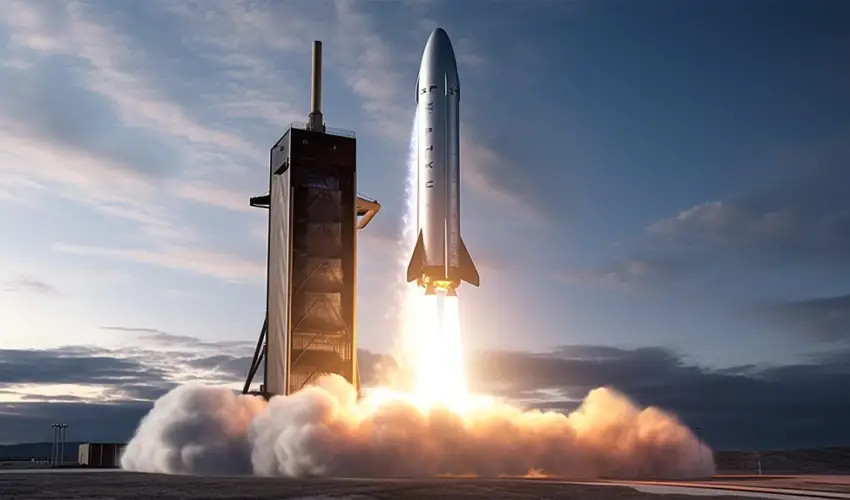SPACE
First American to walk in the SPACE
The first American to perform Space walk.
Published
1 year agoon
By
Gems Sierra
Updated 4th May, Thursday
Abiographer of Ed White- the first American who walked in Space- commented that for Ed, “flying was not merely a hobby, fascination or job. Flying was his birthright”. And he took his “birthright” to staggering heights to do what is scientifically known as “extra-vehicular activity,” i.e., Space walking. He did so on 3rd June 1965. And in achieving this feat, he was only behind Alexi Leonov, a Soviet cosmonaut who was the first person to do a spacewalk.
The first American spacewalk by Ed White was a momentous occasion that allowed the co-pilot James A. McDivitt to take Ed’s photograph as Ed was tumbling in Space. Ed came up with an unforgettable line, “I feel like a million dollars .”And this was a million-dollar event too. The whole space flight was more than four days long and allowed humans to know that this species can stay in Space for a prolonged period of time- possibly moonwalk as well.
And this first American Spacewalk also allowed the U.S. to become the first nation to land on the Moon, and we had a new term coined- moonwalking. But moonwalking or spacewalks (like that of Ed and others to follow him) are not what the terms would, at their outset, suggest.
What is Spacewalking?
Spacewalking is sometimes misunderstood. It doesn’t quite literally mean “you walk in space”. Spacewalking is a broad brush term that encompasses any activity that an astronaut performs while (s)he is out of the spacecraft. Spacewalks can either be tethered, i.e., connected to the spacecraft with an umbilical cord, or be untethered. The spacewalk that was performed by Ed was a tethered one.
There is also the untethered form of spacewalks that astronauts have done since 1984- a feat that astronauts were able to perform only two decades after Ed’s spacewalk. Ed spacewalked for 23 minutes during his flight. This was almost double the time sent by Alexi Leonov- the first spacewalker. The current record for the highest amount of time spent on spacewalking is a staggering 8 hours and 56 minutes.
Some Interesting facts about Ed White- the first American Space Walker

Edward H. White II posing for an iconic photo wearing a spacesuit.
Source: nmspacemuseum.org
- Ed White was one of the “second group of astronauts .”These astronauts were also referred to as the “Next Nine,” who were chosen to take part in the Gemini and Apollo missions. The first group of astronauts was a part of the “Mercury Seven,” who were involved in simple orbital flights. The following nine were chosen for space exploration and lunar landings. Neil Armstrong, the first man in Space, was also a part of the “Next Nine.”
- On the spacecraft which allowed him to become the first spacewalker, he carried three pieces of religious jewelry, which were an emblem of his methodist faith: a gold cross, a St. Christopher Medal (St. Christopher is one of the fourteen helpers who is believed to allow safe traveling) and a Star of David.
- An honorary doctorate in astronautical science was bestowed upon him by the University of Michigan after the flight that made him a spacewalker.
- He piloted aircraft that assisted in training astronauts such as John Glenn, the first American to orbit the Earth.
- He also trained the first hominid in Space- Ham. He instructed him to deal with weightlessness and extensive hours of spaceflight. This made this primate’s first spaceflight possible.
- White tragically died in a spacecraft fire: In 1967, White, along with fellow astronauts Gus Grissom and Roger Chaffee, were killed during a training exercise for the Apollo 1 mission when a fire broke out in their spacecraft.
- Ed White received the “Congressional Space Medal of Honor” posthumously.
Ed White’s journey to become the first American Spacewalker?
Ed White was born Edward Higgins White II, the son of Edward Higgins White Sr, who later became a major general in the United States Air Force. When he was 12, his father allowed him to take control of a trainer aircraft known as North American Aviation T-6 Texan, and in doing so, Ed said, “It felt like the most natural thing in the world to do.”
He followed his father’s footsteps and graduated from West Point just like his father. After graduation, he joined the U.S. Air Force. He later pursued Aeronautical Engineering at the University of Michigan. He was also an attendant of the U.S. Air Force Test Pilot School.
With time, he had the chance to work in various aeronautical departments of different Air Force bases in the U.S. He also played his part in developing weapons and recommendations for the design of aircraft. He inched forward to become the captain who trained people on the weightlessness experienced in Space and the extended time that crew spends on spaceflights. Later, he was selected as a part of Gemini 4, the spacecraft that allowed him to make it to Space.
The Spacecraft that Allowed Ed White to Space Walk

The Capsule, Gemini 4 on display at National Air and Space Museum.
Source: airandspace.si.edu
Gemini 4 was the first space flight by the United States, which streaked across more than a day. The total journey of the spacecraft, which had a launch weight of. 3,570 kg (7,880 lb), was a little over four days. During this time, the spacecraft traveled a total distance of 2,590,600 kilometers.
Before Gemini-4, the longest duration a spacecraft stayed in Space was just 34 hours. Such a prolonged time would have had significant distress- not only on the crew but also on the spacecraft itself as the Space is full of debris. This might be one of the reasons why several experiments were carried out during Gemini. One of them pertaining to the health of the astronauts was the phonocardiogram experiment. It was designed to measure the rate at which the heart of the crew beat during liftoff, at the time of spacewalking, reentry, and radiation in the spacecraft environment. For this, sensors were attached to the bodies of the astronauts in Gemini 4.
After about a little over 22 minutes in the spacewalk, Ed was called back to the spacecraft. He said that getting back to the spacecraft was the saddest moment of his life.
His spaceflight made it possible for him to join the Apollo space program- something that was designed to make the U.S. the first country to go to the Moon. It was later declared by an American President to be a mission whose main objective was “landing a man on the Moon and returning him safely to the Earth. “Unfortunately, this was the very mission that took his life.
The Tragic Death of the First American to Walk in Space
Apollo was scheduled to land on the Moon on 21st February 1967. But during a rehearsal test on 27th January, the spacecraft caught fire. This killed all the 3 crew that were on board.
The fact that the environment in which the rehearsal was being carried out was made out of pure oxygen compounded the issue. Investigators later found that there needed to be more emergency preparedness as equipment like gas masks were absent alongside the absence of medical teams.
All of the crew had third-degree burns, with Ed having more than half of his body suffering the scars of such a burn. During the burn, most of the astronauts’ spacesuits had melted away. An autopsy revealed that carbon monoxide poisoning had resulted in cardiac arrest of all three astronauts.
Impact and Legacy of the First American Spacewalk
After Ed completed his historic spacewalk, the then-president of the United States of America, Mr. Lyndon B. Johnson, awarded him the NASA Exceptional Service Medal.
- The U.S. Post Office issued a postage stamp in 1967 commemorating Ed White’s first American spacewalk. The engraved image accurately depicts the Gemini IV spacecraft and White’s space suit.
- It was the first time in the history of the United States postal services that the design of the postage stamp covered over two stamps.
- In Ed’s honor, Ursae Majoris, a star, was nicknamed “Dnoces .”Dnoces is “Second,” spelled backward. Emphasizing that the full name of Ed was “Edward Higgins White the Second.”
- Numerous hospitals, schools, and parks in many parts of the United States have been named “Ed White” in his honor.
Ed White is forever commemorated in the history of Space Sciences as the first American to spacewalk and the person who might have landed on the Moon if it was not for the horrible accident during the rehearsal of the Apollo flight that took his life.
Frequently Asked Questions Related to “When the First American Walked in Space”
Who were the first three Americans to go to Space?
In chronological order, Alan Shepard was the first American to go to Space. In 1961, he was only behind Yuri Gagarin in Space. Shepard was only three weeks behind Gagarin to make it to Space. Later on, Shepard also made it to the Moon. And that too, at the age of 77, making him the then-oldest person to complete a moonwalk.
Virgil Grissom then became the second American to tread on the Moon when he landed there on Liberty Bell 7 in July 1961. An exciting thing about Liberty 7 is that while it splashed into the Atlantic, it remained lost for almost 38 years and was only recovered in 1998. The American who was the third into Space was John Glen. All three were a part of the Mercury Seven.
Who was the first to enter Space in the 1950s?
In the 1950s, no human being entered Space. The first to go to Space was Yuri Gagarin, who on 12th April reached Space on Vostok-1. There were quite a few animals who went to Space, though. And this exploration of animals into Space began a decade before the 1940s.
The first animals sent to Space were fruit flies when they made it to Space in 1947. The rockets then reached a distance of 109 kilometers, surpassing the Karman line that separates the boundaries between Earth and Space. In 1949, Albert II became the first monkey to Space. But sadly, it died on impact. In 1950 an unanesthetized mouse was launched into Space, and sadly, it didn’t survive the crash. Later, dogs such as Laika and other animals like monkeys also made it to Space in the 1950s and the following decades.
What happened in 1965 in Space?
There were quite a few things that happened in the field of Space in 1965, but none of them were as great as the spacewalks of Alexei Leonov and Ed White. A little over a month after Ed White’s spacewalk, a spacecraft named Mariner 4 flew past the planet Mars. In doing so, it gave the Earth the first close-up pictures of the Martian surface. Mariner 4 took the first pictures of a planet from Space.
Who was the first man to walk in Space in 1965?
In 1965, Alexei Leonov became the first man to walk in Space. Much like Ed Smith himself in his country, Alexei was deemed to be the first person from the Soviet Union to set foot on the Moon. But the Soviets disbanded their lunar program. A decade later, Alexei commanded the Soyuz mission that would be docked with the Apollo mission to become the Apollo Soyuz mission.
In an interview (about his spacewalk) with BBC in 2014, Alexei is quoted to have said: “You just can’t comprehend it. Only out there can you feel the greatness – the huge size of all that surrounds us”. But not many people know that the first spacewalk could have ended in tragedy for Alexei. He is also responsible for producing the first artwork in Space when he drew a sunrise while on his extra-vehicular activity.
Was John Glen the first American in Space?
John Glen was not the first American in Space. He was the third. Overall. He was the fifth person in Space. But he was the first American to circle the Earth-orbiting it three times. When he orbited the Earth, the space capsule’s small dimension earned Glen the title “man in a can.” Glen was a part of the Original Seven or the Mercury Seven- a part of seven-man astronauts selected for the first human spaceflight program of the United States- Project Mercury.
John Glen, along with his team of Mercury 7, were the first astronauts in the country and therefore opened up a whole new profession for people to follow. Glen went on to become a U.S. Senate and the then-oldest person to visit Space when he was 77 years old.
Who were America’s first three astronauts?
America did not really have the “first three astronauts.” They had a total of 7 who were collectively known as Mercury 7. All of the seven first astronauts of America were test pilots at the United States Department of Defense- some of whom were Navy, a couple in the Marine Corps, and others in the Air Force.
Who was the first woman to walk in Space?
The first woman to walk in Space was the same woman who, during her spacewalk, became the first woman to go to Space on two occasions. In the list of women who made it to Space, she was only behind Valentina Tereshkova. Her name was Svetlana Yevgenyevna Savitskaya.
Svetlana was an accomplished pilot who held several world records ranging from extra-vehicular duration in Space (aka time spent spacewalking) by a woman, the greatest payload in powered airplanes, and several other time records to climb to various altitudes. She was also a member of the all-female team that won the World Aerobatics Championships in 1970.
Who was the first American astronaut to float in Space?
Any person who spacewalks is someone who has floated in Space. But the general feeling is that a “float” refers to an untethered spacewalk, i.e., you are spacewalking but without any cable that is binding you to the spacecraft like Ed White. And this feat was first accomplished by an American astronaut by the name of Bruce McCandless II using the Manned Maneuvering Unit.
There is an iconic image of Bruce McCandless II floating about in Space against the lambent contrast of the Earth. The Guardian newspaper once quoted John McCain to have said, “The iconic photo of Bruce soaring effortlessly in space has inspired generations of Americans to believe that there is no limit to the human potential.” After retiring from NASA, Bruce worked for Lockheed Martin Space Systems, which works in making military as well as commercial space probes and satellites.
Who was the first to walk on the Moon?
Neil Armstrong, when he stepped on the Moon on the very first occasion, came up with the rather unforgettable quote, “That’s one small step for a man, one giant leap for humanity.” Neil’s historic words were also referenced by the first American to float into Space when Bruce, on his way to an untethered spacewalk, said, “‘It may have been a small step for Neil, but it’s a heck of a big leap for me.” There is also a crater on the Moon that has been named “Armstrong” in Neil’s honor.
It was Neil’s advent into the voyage of the Moon that has allowed for ideas such as DearMoon projects that are considering lunar tourism something accomplishable. Neil’s momentous occasion came on 20th July 1969, and along with the courage that people like Bruce McCandless, Ed White, and their ilk have shown, allowed companies to claim that they’d take a circumlunar flight to the Moon as far back as in 1015, though some of them turned out to be a sham.
You may like
-


Crash Course in Conspiracy: How Social Media is Replacing Black Boxes with Influencer Investigations
-


Tragedy in the Skies: Second Helicopter Crash Near Kedarnath Kills Seven, Including Child
-


𝐓𝐡𝐞 𝐁𝐨𝐞𝐢𝐧𝐠 𝟕𝟖𝟕 𝐃𝐫𝐞𝐚𝐦𝐥𝐢𝐧𝐞𝐫’𝐬 𝐟𝐢𝐫𝐬𝐭 𝐝𝐨𝐰𝐧𝐢𝐧𝐠
-


Nepal Airlines dispatches its Narrow Body Aircraft for C-Check
-


An American Airlines CRJ and a Military Blackhawk Helicopter collides Mid Air
-


TIA to reduce maintenance period, extending current operating hours
